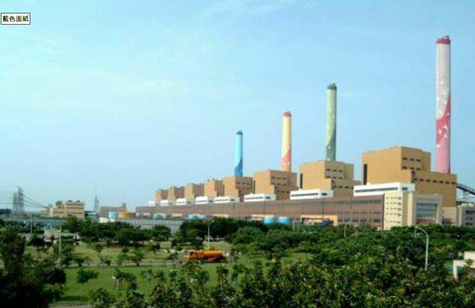The World’s 200 Dirtiest Power Plants
Forbes.com has an interactive map of the dirtiest coal power plants. Click on the graphic below and you’ll be sent directly to the map. Writer Jon Bruner introduces the map:
“Sixty percent of the world’s electricity comes from plants burning fossil fuels and releasing carbon. Many of the highest-emission plants are concentrated in the United States and East Asia. Here, a look at the world’s 200 biggest carbon offenders among power plants. Roll over any plant for more information.”

Click to go to interactive map
Taichung power plant
 The “worst of the worst” is Taiwan’s Taichung power plant, emitting 40 million tons of carbon annually.
The “worst of the worst” is Taiwan’s Taichung power plant, emitting 40 million tons of carbon annually.
That’s a lot of carbon, a lot of CO2 pumped up into earth’s atmosphere forcing climate change.
America doesn’t have anything of this magnitude, do we?
Not exactly. The dirtiest power plant in the United States is the Robert Scherer power plant near Juliette, Georgia.
Each year, it produces 27 million tons of carbon — about 67% of what the Taiwanese plant emits.

Scherer power plant, Georgia
Twenty-seven million tons of carbon is still a lot to be pumping into the air. And that’s just a fraction of the 800 million tons of carbon produced by the 53 U.S. coal-fired power plants that made Forbes’ “Dirtiest 200” list.
Of course there are several ways to crunch these numbers. For example: by comparing the per capita CO2 emissions between nations.
According to data from the Energy Information Administration, the United States emitted 19.78 tons of CO2 per capita in 2006.
Taiwan emitted “just” 13.19 tons.
That earns the US the number two spot in per capita emissions among nations, with Taiwan coming in at number eight.* (Leading the pack is Australia, with a per capita emissions rate of 20.58 tons.)

Per capita emissions data from: H.1cco2 World Per Capita Carbon Dioxide Emissions from the Consumption and Flaring of Fossil Fuels, 1980-2006, metric tons of CO2, Energy Information Administration.
* Among countries with populations of five million or more. Although Gibraltar was number one in per capita emissions (with a whopping 160.22 tons), the British colony has a population of 28,000 people. It doesn’t seem helpful to include the Gib or other small nations in this ranking. A country needed to have at least five million residents to be included — or about the same size as Dallas-Ft. Worth.



 The “worst of the worst” is Taiwan’s Taichung power plant, emitting 40 million tons of carbon annually.
The “worst of the worst” is Taiwan’s Taichung power plant, emitting 40 million tons of carbon annually.
